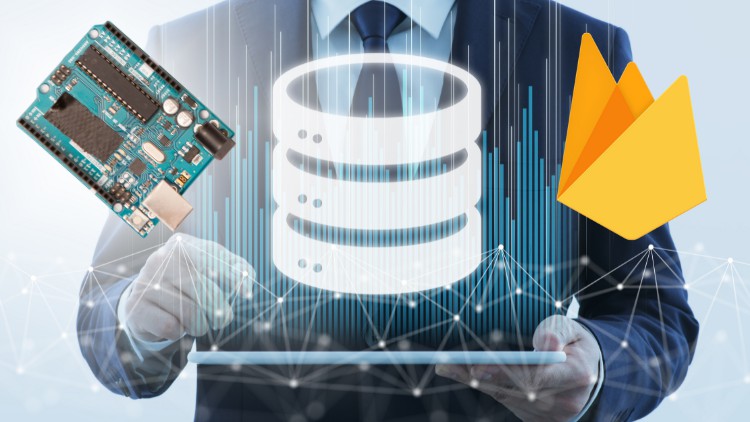
This course will teach you how to use Arduino to communicate with a Firebase database
What you will learn
You will learn how to store and retrieve data from a Firebase database
You will learn how to use Arduino to communicate with a Firebase database
You will learn how to use the Arduino to send, receive and update data in Firebase database
You will learn more than one way to make Arduino connect to the Internet
Description
Introduction
In today’s era of technology, it has become increasingly important to be able to communicate with other devices and applications. In this course, we will be discussing the basics of Arduino Firebase communication, which is a course that can help you learn how to create your own database with Google’s Firebase platform. Arduino is a popular platform for making interactive projects. The Arduino Firebase Communication course teaches you how to create an Arduino-based device that sends and receives data to a Firebase database. This course is perfect for anyone who wants to learn how to use Firebase or build more advanced applications with it while connecting it to Arduino.
In this course, you’ll learn how to use an Arduino UNO and an ESP8266 module to upload and retrieve data to and from a Firebase database, same knowledge can be applied using an Arduino WiFi shield.
Storing data (such as sensor data) in a database that can be accessed via the internet from anywhere could be very valuable. Data storage and retrieval are simple with Firebase.
What is Arduino?
An Arduino Firebase Communication course will teach you how to use the popular platform, Firebase, with your Arduino board. You’ll learn how to create simple projects that communicate with the Google Cloud Platform, and even send and receive data from Firebase database.
What you’ll learn In this course,
- You’ll learn how to connect to the Firebase cloud with your Arduino board.
- You’ll learn how to create and send data on the Firebase platform.
- This course will teach you how to use Arduino to interact with a firebase database
- You will learn how to retrieve data from a firebase database
- Gain a strong understanding of the principles behind Firebase technology
- Know how to create, read, update, and delete data from a Firebase database using Arduino
- How to Create a Firebase Database
- How to use Firebase to upload data
What is Firebase?
Firebase is a cloud-based application platform that helps you develop, host, manage, and secure real-time apps. Create rich web and mobile experiences on any device with no code required.
The following are some of the services provided by Firebase:
- Firebase Analytics is a free app measurement service that gives you insight into how your app is being used and how engaged your users are with it.
- As of 2016, Firebase Cloud Messaging (FCM) is a free cross-platform solution for messaging and notifications for Android, iOS, and web applications.
- Firebase Auth is a service that allows users to be authenticated using solely client-side code. It works with Facebook, GitHub, Twitter, and Google as social login providers (and Google Play Games). It also features a user management mechanism that allows developers to enable or disable users.
Things that we will cover in this course:
- How Arduino and Firebase can communicate?
- How to create simple projects that communicate with the Google Cloud Platform?
- How to send and receive data?
- What are the requirements?
- What do I need to bring?
Content